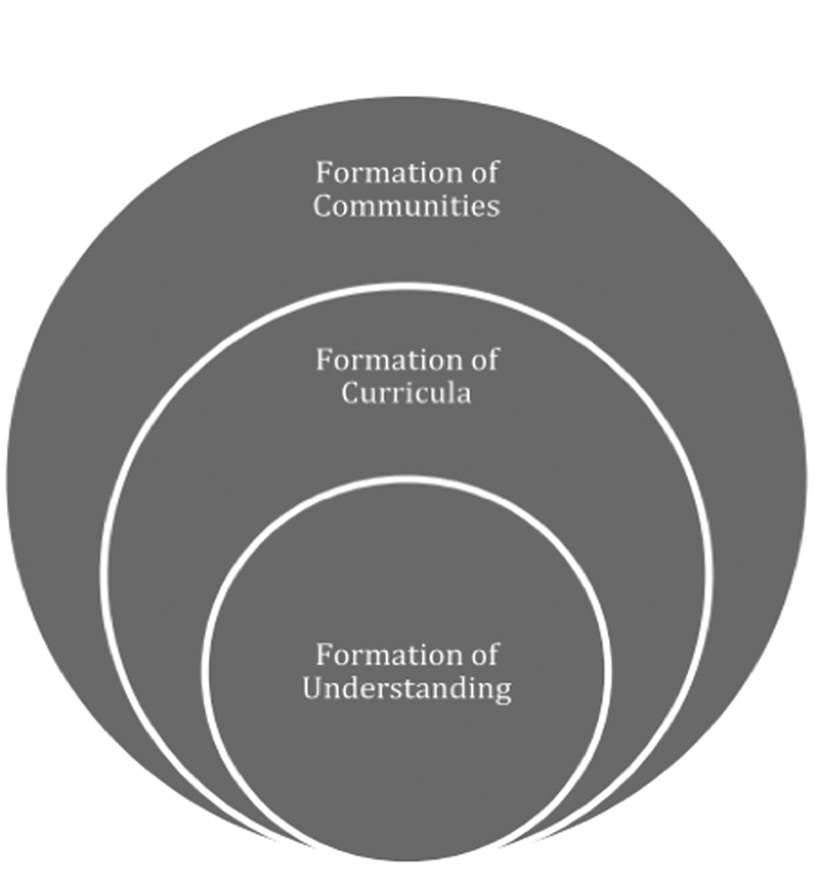2. Background: from engagement to partnership and beyond
In 2011 Axelson and Flick wrote that ‘few terms in the lexicon of higher education today are invoked more frequently, and in more varied ways, than engagement’ (2011, 38–43). Five years later (2016) and the term ‘engagement’ is no less used. Furthermore, in addition to researchers, policy makers have also adopted it extensively, and it has become common parlance within the learning and teaching literature.
The term refers to how involved or interested students appear to be in their learning and how connected they are to their classes, their institutions and each other. Ashwin and McVitty (2015) provide a very informative account of the problem of defining student engagement. They argue that when we talk about student engagement it is important to focus on the object of engagement or what it is to be ‘formed’ through that engagement. With this approach in mind, Ashwin and McVitty define three broad objects of engagement:
engagement to form individual understanding – how student engagement can help students to improve their learning outcomes;
engagement to form curricula – how students can help to form the courses that they study in higher education;
engagement to form communities – how students can be involved in helping to shape the institutions and societies of which they are part.
For the Quality Assurance Agency (QAA), the independent body which monitors and advises on standards and quality in UK higher education, student engagement is about students getting involved, raising their views, feeling empowered and shaping their education. The QAA sees its role as bringing students and university staff together to influence decision makers, share good practice and ensure students are at the centre of the process (QAA 2012).
But is student engagement synonymous with partnership? As Healey et al. (2014, 7) argue, ‘all partnership is student engagement, but not all student engagement is partnership’.
The distinction, according to NUS (2012, 8), is that, ‘the sum total of student engagement activity at an institution does not equate to partnership; this is because partnership is an ethos rather than an activity’.
The same philosophy has been adopted by the UK Higher Education Academy (HEA). In the foreword to Healey et al. (2014), HEA’s Deputy Chief Executive Philippa Levy argues that ‘“student engagement” has become a core aim for the [HE] sector’ (Healey et al. 2014, 4).
Where the QAA sees partnership as an outcome, Healey et al. (2014, 12) see partnership as a process of engagement. It is a way of doing things, rather than an end goal, in which all those involved – students, academics, professional services staff, senior managers, students’ unions, and so on – are actively engaged in and stand to gain from the process of learning and working together.
The common denominator in all three initiatives is students. Students, therefore, were the focus of the R=T initiative. We invited current UCL students to express an interest in participating in the initiative, and the resulting testimonies demonstrate that students were interested in forming partnerships that will not only change their perceptions and help them gain knowledge, but also transform their education:
Encouraging students to engage more with current research, as well as attempt their own, leads to more natural and long-lasting learning. Research-based education also gives students the opportunity to teach their fellow students about their findings, therefore encouraging and reinforcing new ideas between peers. This sense of ownership over their degrees and learning outcomes leads not only to better scholarship, but a more confident interaction with the cultures in question. (Mary)
By going through the research-based approach, learners are able to realise their full potential by understanding how knowledge is created. Initiatives such as R=T initiative give learners and researchers the chance to see behind the scenes, to learn crucial skills early and be prepared to undertake research at any level, because innovation is possible at any stage. (Mariya)

